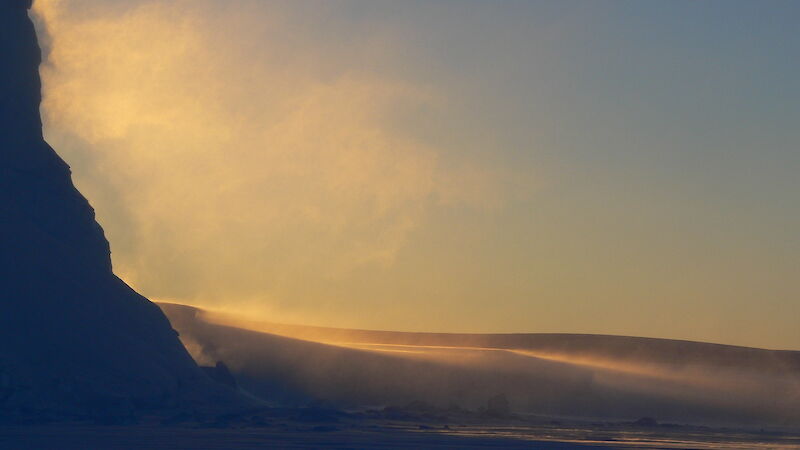The katabatic wind is the best known of these ‘downslope’ wind patterns. The air close to the icy surface cools as it radiates away its heat. This makes it heavier and forces it to flow downhill. The accumulation of this flow down to the coast makes the katabatic. Its effect is strongest when the warmth of the sun does not interrupt the process. This means that the strongest katabatic winds happen in winter and through the early mornings in summer.
Weather systems that drive storms and fronts can also feed the downslope winds. When the air is pushed up against the icy terrain, it creates pressure zones that also favour downslope winds. These add to the consistency of the wind patterns we experience at the coast. They may not strictly be called katabatics, but they are just as cold on your face and hands and consistent in their direction.
A weather balloon released in a katabatic will be blown strongly along the ground before rising upward, but it will find calmer air very quickly. The katabatic wind is very much confined to near the surface.
As that same weather balloon reaches stratospheric heights, it will feel the influence of larger scale wind patterns.
The Antarctic polar vortex is a stratospheric wind pattern. It blows strongly around the earth at about the latitude of the Antarctic coast. It is strongest in the colder times of the year and is driven by the temperature difference between the cold pole and the warmth of the lower latitudes.
Unlike the northern polar vortex, the Antarctic polar vortex has a very consistent shape. This is because the northern hemisphere has big mountain ranges at the right latitudes to stir the air and interrupt the flow (the Rockies, the Alps and the Urals). The flatness of the southern hemisphere mid latitudes allows the polar vortex to hold its shape.
The lack of disturbance in the southern polar vortex has a consequence for our lives in Australia. The consistent shape of the polar vortex holds springtime ozone depleted air in place and is the reason there is a southern hemisphere ozone hole and not a northern hemisphere one. Then, when the ozone hole breaks up and its remnants pass over us, it is time for extra sunscreen.

